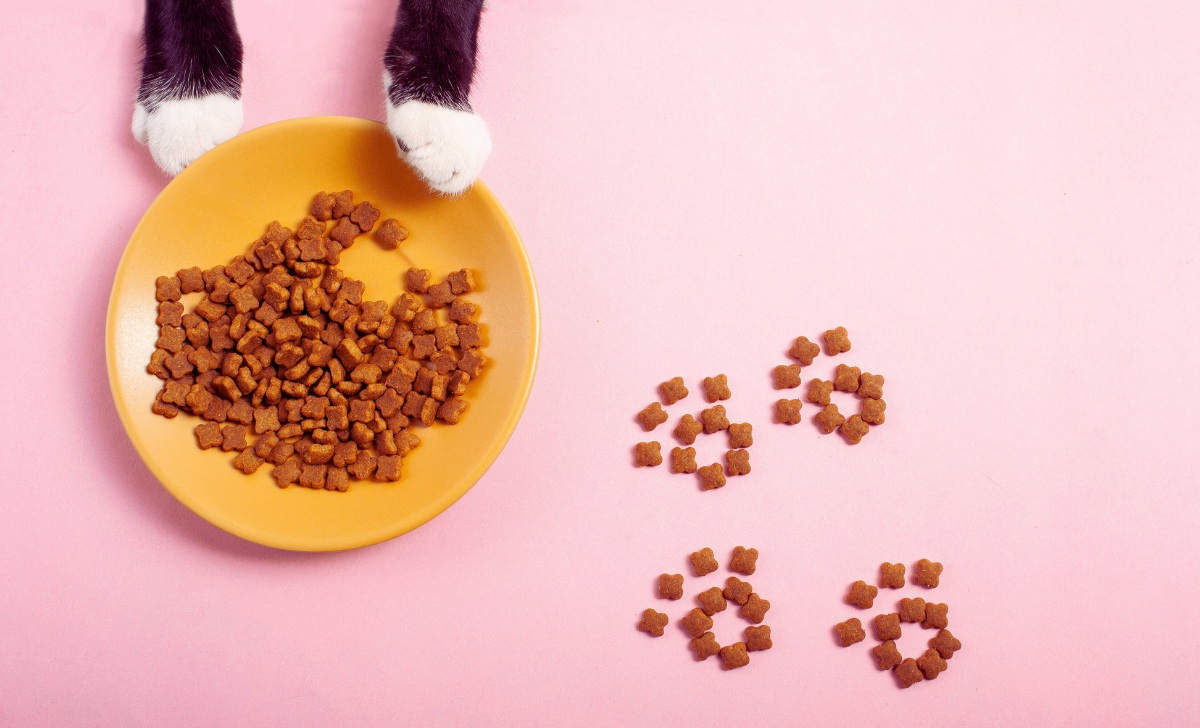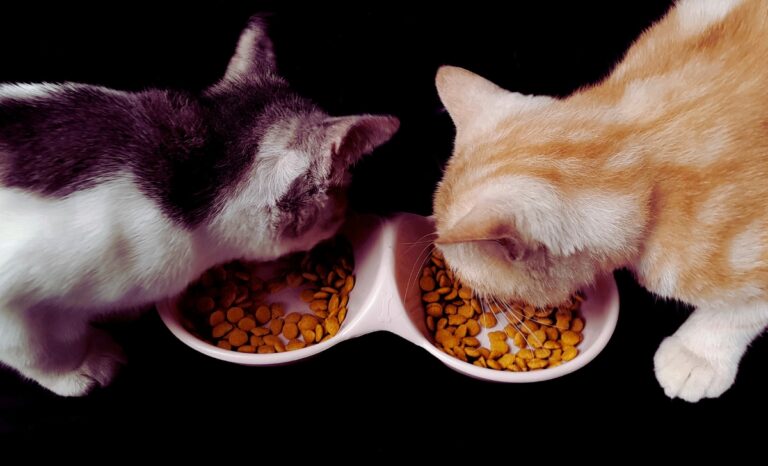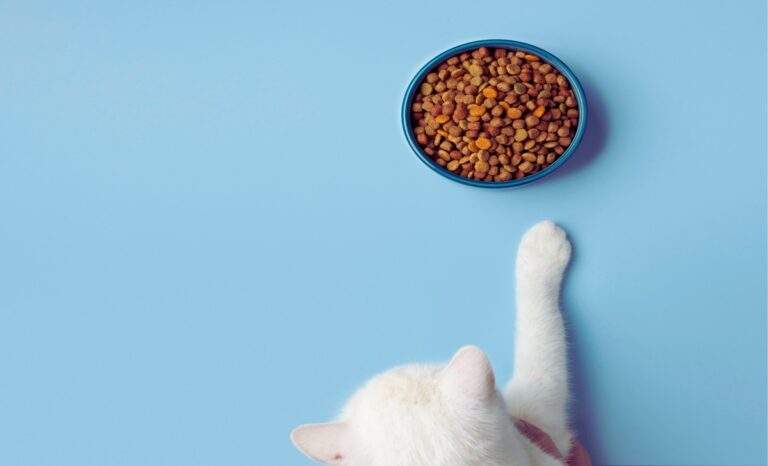The best cat food for dry skin is vital in improving your feline’s overall skin and coat health. A balanced diet designed to address dry skin can significantly affect your cat’s comfort and quality of life. Dry skin in cats often leads to itching, irritation, and a dull coat, affecting their well-being and happiness. Providing food rich in essential nutrients like omega-3 fatty acids, vitamins, and high-quality proteins supports healthy skin and a shiny coat. Choosing the right cat food tailored for skin health ensures your furry companion stays comfortable, vibrant, and full of life.
Table of Contents
ToggleCauses of Dry Skin in Cats: Understanding the Root Problems
Dry skin in cats can be more than just a cosmetic concern—it often signals underlying health issues that need attention. Factors such as poor diet, allergies, or environmental conditions can contribute to dryness. In particular, the right nutrition plays a key role in maintaining your cat’s skin health. Offering the best cat food for dry skin, which is rich in omega-3 fatty acids, can help improve hydration and coat quality. By addressing the root causes and choosing a suitable diet, you can alleviate discomfort and ensure your cat’s skin stays soft, smooth, and healthy.
Environmental and Dietary Factors
When it comes to managing dry skin in cats, providing the right nutrition is essential. One of the key factors in ensuring your cat’s skin stays healthy and hydrated is selecting the best cat food for dry skin. High-quality cat food rich in omega-3 and omega-6 fatty acids, vitamins, and minerals can help restore moisture and support the skin’s natural oils. These nutrients not only nourish the skin but also promote a shiny, soft coat. Always opt for a balanced diet that includes natural ingredients, as this will give your cat the nutrition it needs to maintain healthy skin and fur year-round.
Key Causes of Dry Skin in Cats
- Allergies: Cats can develop allergies to food, environmental irritants, or grooming products. These allergies often cause itchy and flaky skin.
- Dehydration: Inadequate water intake can result in dry skin. Cats that don’t drink enough or consume primarily dry food are more prone to dehydration.
- Nutrient Deficiencies: A diet lacking vital nutrients, such as Omega-3 and Omega-6 fatty acids, can impair skin health and lead to dryness.
The Role of Omega-3 and Omega-6 Fatty Acids
By addressing these factors, you can significantly improve your cat’s skin condition and prevent dryness. Regular vet checkups and a balanced diet are key to keeping your feline friend healthy and comfortable.
What to Look for in Best Cat Food for Dry Skin
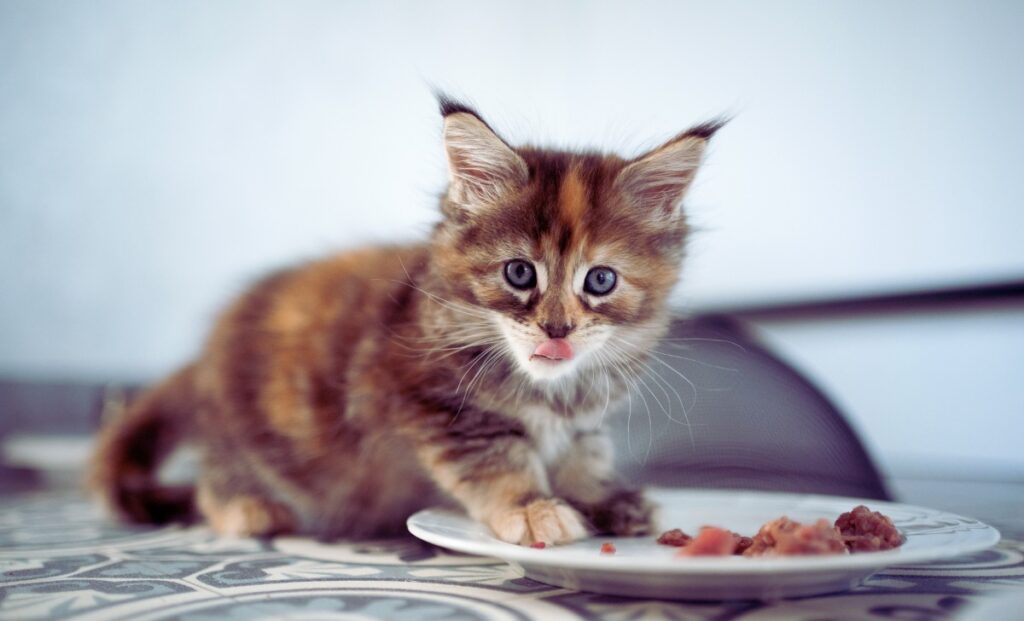
- Omega-3 and Omega-6 Fatty Acids: These essential fatty acids are vital for keeping your cat’s skin hydrated and supple. They also reduce inflammation, which helps soothe dry or irritated skin.
- High-Quality Protein: Protein isn’t just for building muscles. It plays a crucial role in regenerating healthy skin cells, ensuring your cat’s coat remains shiny and smooth.
- Vitamins (like Vitamin E): Vitamin E improves skin elasticity and repairs damage caused by dryness. It also acts as a natural antioxidant, protecting your cat’s skin from environmental stressors.
- Avoid Harmful Additives and Allergens: Some additives, like artificial colors, flavors, and common allergens, can worsen your cat’s skin issues. Look for foods with clean, minimal ingredients.
- Moisture-Rich Ingredients: For the best cat food for dry skin, choose options with high moisture content or mix dry kibble with wet food to improve hydration. Look for formulas with omega-3 and omega-6 fatty acids to support skin health and a shiny coat.
Top 5 Cat Food Recommendations for Dry Skin: Nourish Your Feline’s Coat
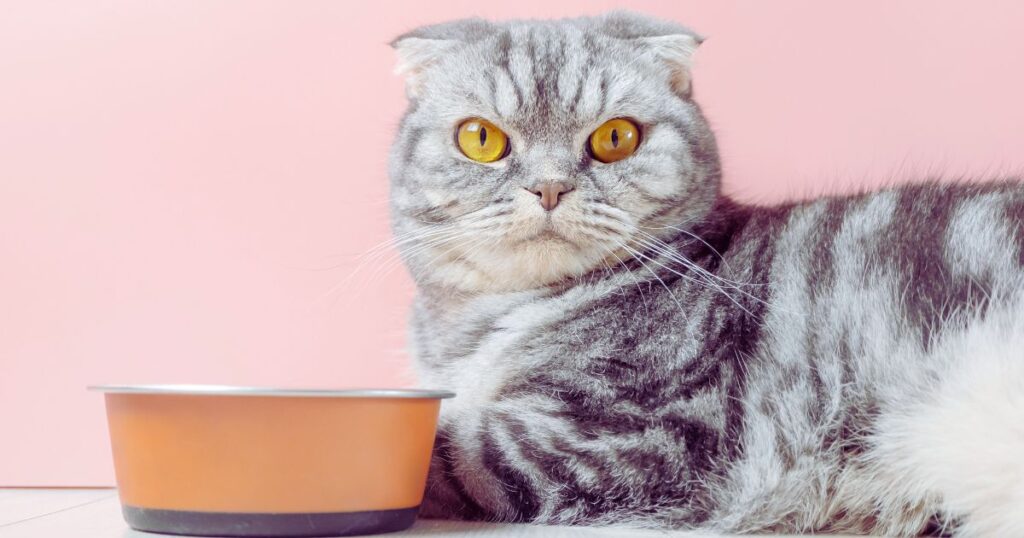
If your cat is struggling with dry skin, it’s essential to choose a cat food that nourishes their skin and coat from the inside out. The right diet can help improve dry skin by providing essential fatty acids, vitamins, and minerals. Look for cat foods that contain high-quality proteins, omega-3 and omega-6 fatty acids, and a balanced blend of nutrients to support overall skin health.
Some of the best cat foods for dry skin include options like Wellness CORE Grain-Free Salmon for its rich omega-3s, Hill’s Science Diet Sensitive Stomach & Skin which promotes skin moisture, Royal Canin Veterinary Diet Dermatitis formulated to support skin and coat health, Blue Buffalo Wilderness High-Protein Chicken with a boost of healthy fats, and Orijen Original for its nutrient-dense ingredients. These foods are carefully designed to combat dry skin while offering complete nutrition for your cat’s well-being.
1. Hill’s Science Diet Adult Sensitive Stomach & Skin
Hill’s Science Diet is a trusted brand known for its science-backed formulas that support overall cat health.
Key Benefits:
- Rich in omega-6 fatty acids and vitamin E for healthy skin and a shiny coat.
- Easily digestible ingredients to support sensitive stomachs.
- High-quality protein to maintain lean muscle.
Customer Reviews:
Most cat parents praise this formula for significantly reducing itching and improving coat softness.
Price Range & Availability:
- Price: $30–$50 for a 7-lb bag.
- Widely available at pet stores and online retailers.
2. Purina Pro Plan Sensitive Skin & Stomach
Purina Pro Plan offers a premium formula designed for cats with sensitive skin and digestion issues.
Key Benefits:
- Contains real turkey as the first ingredient for high-quality protein.
- Fortified with omega-3 and omega-6 fatty acids to nourish skin and coat.
- Prebiotic fiber promotes healthy digestion.
Customer Reviews:
Cats enjoy the taste, and pet owners report noticeable improvements in skin health within weeks.
Price Range & Availability:
- Price: $25–$40 for a 7-lb bag.
- Available at most pet supply stores and online.
3. Royal Canin Feline Care Nutrition Skin & Coat Care
Royal Canin specializes in breed-specific and condition-specific nutrition, making it a reliable choice for skin health.
Key Benefits:
- Enriched with omega-3 and omega-6 fatty acids to strengthen the skin barrier.
- Balanced nutrients to maintain a soft and shiny coat.
- Palatable kibble that cats love.
Customer Reviews:
Veterinarians often recommend this formula for its proven results. Owners note a marked reduction in flaky skin.
Price Range & Availability:
- Price: $40–$60 for a 6-lb bag.
- Easily accessible online and in specialty pet stores.
4. Blue Buffalo Wilderness High Protein Grain-Free
Blue Buffalo offers a natural, grain-free recipe for cats with dietary sensitivities and dry skin.
Key Benefits:
- Real chicken is the primary ingredient for lean protein.
- Contains omega fatty acids from fish oil to promote skin and coat health.
- Grain-free formula reduces potential allergens.
Customer Reviews:
Highly rated for its natural ingredients and visible improvements in skin texture.
Price Range & Availability:
- Price: $35–$50 for a 5-lb bag.
- Available at major pet retailers and online stores.
5. Wellness CORE RawRev High-Protein Dry Cat Food
Wellness CORE combines high-protein kibble with freeze-dried raw meat for optimal nutrition.
Key Benefits:
- High protein content supports skin and overall health.
- Omega-3 and omega-6 fatty acids combat dryness and flakiness.
- Free from artificial colors, flavors, and preservatives.
Customer Reviews:
The best cat food for dry skin should be rich in Omega-3 and Omega-6 fatty acids, which help hydrate and nourish the skin. Look for high-quality proteins and natural ingredients to improve coat health. Cats with picky appetites also love the addition of raw bits, making it a hit with selective eaters.
Price Range & Availability:
- Price: $40–$65 for a 10-lb bag.
- Sold in pet stores and through online platforms.
Homemade Best Cat Food for Dry Skin and Recipes
Cats with dry skin need extra care, especially when it comes to their diet. A well-balanced, nutrient-rich meal can make a significant difference in your feline’s overall skin health and hydration. Preparing homemade cat food using simple, vet-approved ingredients ensures your cat gets the right nutrients without harmful additives. Below are easy recipes enriched with Omega-3 fatty acids, lean proteins, and hydrating vegetables that promote soft, healthy skin.
Why These Ingredients Work
- Salmon or Fish Oil: Packed with Omega-3 fatty acids, it reduces inflammation and enhances skin elasticity.
- Lean Meats and Eggs: Excellent sources of protein that support skin repair and maintain a shiny coat.
- Sweet Potatoes or Pumpkin: High in water content and natural fibers, these helps hydrate the skin from within.
Homemade Best Cat Food For Dry Skin Recipe 1: Omega-3 Boosted Chicken Feast
Ingredients:
- 1 cup cooked chicken (shredded, skinless, and boneless)
- 1 tsp salmon or fish oil
- 2 tbsp mashed sweet potato
- 1 boiled egg (mashed or finely chopped)
Instructions:
- Combine all the ingredients in a bowl and mix thoroughly.
- Ensure the meal cools to room temperature before serving.
- Divide into portions based on your cat’s size and refrigerate leftovers for up to 2 days.
Homemade Best Cat Food For Dry Skin Recipe 2: Hydrating Turkey-Pumpkin Delight
Ingredients:
- 1 cup ground turkey (cooked and drained)
- 1 tbsp canned pumpkin (unsweetened and plain)
- 1 tsp fish oil
- 1 boiled egg yolk (mashed)
Instructions:
- Mix the turkey, pumpkin, fish oil, and mashed egg yolk in a bowl.
- Let the mixture cool before serving.
- Store unused portions in an airtight container for up to 48 hours.
Tips for Serving Homemade Cat Food
- Always use high-quality, fresh ingredients and avoid seasoning or spices.
- Consult your vet before making any major dietary changes to ensure the recipes meet your cat’s specific needs.
- Transition to homemade meals gradually to avoid digestive issues.
Additional Tips to Manage Your Cat's Dry Skin
Here are some practical steps you can take:
- Hydration is key: Make sure your cat has constant access to fresh water and consider incorporating wet food into their diet. Wet food provides extra moisture that helps keep the skin hydrated.
- Regular grooming: Brushing your cat’s fur helps to remove dandruff and dead skin cells while stimulating blood circulation to the skin. Regular grooming also keeps the coat shiny and healthy.
- Environmental adjustments: Keep the air in your home humid to prevent the skin from drying out, especially during colder months. You can use a humidifier or adjust the temperature to maintain a comfortable level of moisture.
- Consult your vet: For cats with dry skin, choosing the best cat food for dry skin, rich in omega-3s and natural oils, can help improve skin health. If dryness continues, a vet visit is important for proper diagnosis and treatment.
Conclusion:
FAQs:
01. How long do diet changes take to improve dry skin?
Answer: Switching to the best cat food for dry skin can take 6–8 weeks to show noticeable improvements. The right nutrient-rich diet helps restore moisture and promote healthier skin, though results may vary based on your cat’s health and the severity of the condition.
2. Can wet food alone help with dry skin?
Answer: The best cat food for dry skin should include wet food to boost hydration and Omega-3 and Omega-6 fatty acids to support skin and coat health. This combination helps reduce dryness and promotes a shiny, healthy coat.
3. Are grain-free diets better for cats with dry skin?
Answer: For the best cat food for dry skin, choose a nutrient-rich formula with Omega-3 and Omega-6 fatty acids, high-quality protein, and added vitamins like Vitamin E. A balanced diet is key to supporting skin health and reducing dryness, rather than just eliminating grains.
4. Is it okay to mix dry and wet food for my cat?
Answer: Yes, mixing dry and wet food is a great way to provide balanced nutrition and hydration. Ensure both types of food are high-quality and specifically formulated for skin health.
5. How can I tell if my cat’s dry skin is caused by food allergies?
Answer: Food allergies in cats often cause symptoms like itching, excessive scratching, and redness along with dry skin. Consult your veterinarian for an allergy test or try a limited-ingredient diet to identify potential triggers.

